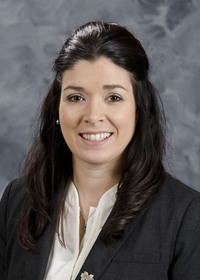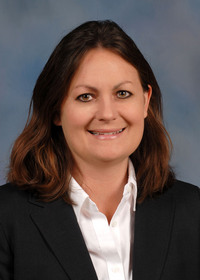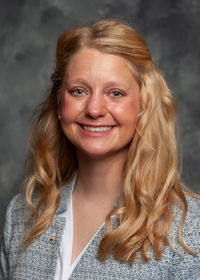Calving Season Selection Considerations
Calving season affects beef cattle production and associated costs and returns. It is important to choose an appropriate calving season for the ranch. Following are calving season decisions to consider:
- cattle nutrient demand
- nutrient supply from forage and feed
- seasonal effects on fertility
- seasonal effects on calf performance
- seasonal markets and profit potential
One type of calving season does not work best for all Mississippi beef cattle operations in terms of length or time of year. Each producer must make an informed decision on which calving season is ideal for the operation.
Controlled Calving Season
The producer should define and control a calving season. A controlled calving season starts with a controlled breeding season. Table 1 lists expected calving dates for specific breeding dates throughout the year. A controlled breeding season means herd sires must be removed from the breeding herd on a designated date. The key to implementing a controlled breeding and calving season is to be diligent about separating bulls from the cow herd on schedule.
Implementing a controlled breeding and calving season can be accomplished over time with minimal production loss. A controlled breeding and calving season offers several advantages over a year-round, uncontrolled season. A controlled calving season allows you to match nutritional needs of the herd to forage resources, facilitates more intense monitoring of breeding and calving, facilitates working more calves of a similar age at once (vaccinating, castrating, growth implanting), and produces calves of uniform age that can be marketed in groups to capture sale premiums.
A controlled breeding season allows herd sires time to rest and regain body condition that might have been lost during the breeding season. Not having herd sires with the cow herd year-round also reduces the risk of injury to bulls. When deciding on an appropriate length to the calving season, first consider impacts on reproductive performance and then the advantages of having calves within a tight age range.
One argument for not moving to a controlled breeding and calving season is that, with calves of different ages scattered throughout the year, income can be spread throughout the year. This is the notion of using a year-round calf crop as a checking/savings account. But a controlled breeding and calving season often leads to higher annual revenue and profit in a cow-calf operation. In addition, with planned and disciplined budgeting, revenues from calf sales using a controlled breeding and calving season can be made available during months in which calves are not marketed.
Spring Versus Fall Calving
Mississippi beef cattle operations calve during various seasons of the year. While most operations in the state calve during the spring months, an increasing number of operations are shifting to fall- and winter-calving seasons. A minority of operations practice summer calving. When comparing spring- and fall-calving seasons, there are advantages and disadvantages to each.
Nutrient demands of beef females are generally highest in the first few months after calving. Cows calving in the fall normally need more winter supplementation than spring-calving females. As cow size and production level increase, nutrient demands become even greater.
The supply of nutrients available at any particular time during the year depends largely upon the forage base. Cool-season pasture production can become limiting during winter months, necessitating a winter-feeding period of stored feeds and forages. These winter-feeding costs often make up a large percentage of the cash costs in a cow-calf operation. An advantage to fall calving is that cool-season forages are typically higher in quality and nutrient content than warm-season forages.
Seasonal effects on fertility exist. Increased numbers of follicles and larger follicle size in beef females are generally seen in spring more than in fall. During late fall and winter, lower fertility rates have been documented in Bos indicus (Brahman influence) cows compared to other times of the year. Lower serum progesterone concentrations and abnormal estrous cycle lengths have also been observed in Brahman heifers during winter months.
In Mississippi, the effects of heat stress on fertility are more a cause for concern than cool-season effects. Heat stress is the result of a combination of both ambient temperature and humidity (heat index). The hot, balmy summer months in the state can depress bovine fertility in both females and males. The negative effects of heat stress on cows include hormone imbalances, reduced ova quality, lower conception rates, early embryo death, and reduced blood flow to the uterus. Conception rate averages are greatly depressed in July, while late-spring conception rates are three to five times higher.
Bulls experiencing heat stress lasting only 12 hours can have impaired spermatogenesis (sperm production). The recovery time to normal sperm production is 6 to 8 weeks after the heat stress period. Libido and serving capacity can decline during hot weather, as well. In short, for optimum reproductive performance, Mississippi producers should avoid breeding during the late, hot summer months.
Calf performance is also influenced by season. Gestation length early in the fall-calving season can be shortened by about 3 days compared to later in the fall-calving season. Calf birth weights are typically higher in spring than in fall, while calf birth weights may decrease during the summer. A possible explanation for this is, as beef females are gestating through the hot summer months, blood is shunted away from the fetus and to the body surface and extremities to dissipate heat. Calving during the hot summer months is generally not recommended in Mississippi.
Calf weaning weights in the southeastern U.S. tend to be lower in spring-born calves than fall-born calves. Calves born in summer are significantly lighter at weaning than calves born the rest of the year. Although spring-born heifers are often lighter at weaning than fall-born heifers, post-weaning gains and body condition scores at breeding are higher for spring-born calves than fall-born calves. As the percentage of Brahman influence increases, calf pre-weaning average daily gain and weaning weight do not differ among fall-born calves but increase among spring-born calves. This may be due to heat-tolerance advantages of Brahman genetics as spring-born calves grow through the summer.
Seasonal markets and profit potential are another factor in choosing appropriate calving seasons. For producers who traditionally market calves immediately after weaning, spring-born calves are marketed in the fall and fall-born calves in the spring. Seasonal highs for feeder calf prices usually hit in the spring as feeder calf supplies tighten and demand for calves increases to use spring and summer forages. Producers retaining ownership of calves post-weaning must look at seasonal costs and marketing opportunities further down the production chain. Seedstock producers should consider targeting the calving season so cattle reach a marketable age during peak demand periods for replacements. Seasonal differences in production costs must also be taken into account. The primary forage base greatly impacts supplementation needs and costs.
Some producers decide to use two defined calving seasons. This provides the option to roll non-pregnant, breeding females to the opposite calving season without having to miss an entire production cycle. It also allows a reduction in the size of the bull battery needed to settle the herd. Herd sires can be used in both seasons, but nutritional programs must be designed to maintain good bull body condition going into each breeding season. If more than one calving season is used, there is an opportunity to compare the effects of changes in markets and weather on production and profitability at a single location. This comparison may identify a preferable calving season for the specific conditions of the ranch. With two calving seasons, management and resource demands for each season should be evaluated along with the advantages described previously to determine if using two calving seasons is preferable to using one season.
Conclusions
Decisions on when to calve should be based on site-specific conditions affecting production, costs, and returns. What works in another region of the country or even another area of the state may not work for your operation. By keeping good production and financial records and assessing forage resources, herd fertility, calf performance, and marketing options, a suitable calving season can be found for your ranch. For more information on calving seasons, contact your local MSU Extension office.
|
Date |
1 |
2 |
3 |
4 |
5 |
6 |
7 |
8 |
9 |
10 |
11 |
12 |
13 |
14 |
15 |
16 |
17 |
18 |
19 |
20 |
21 |
22 |
23 |
24 |
25 |
26 |
27 |
28 |
29 |
30 |
31 |
|---|---|---|---|---|---|---|---|---|---|---|---|---|---|---|---|---|---|---|---|---|---|---|---|---|---|---|---|---|---|---|---|
|
Jan |
1 |
2 |
3 |
4 |
5 |
6 |
7 |
8 |
9 |
10 |
11 |
12 |
13 |
14 |
15 |
16 |
17 |
18 |
19 |
20 |
21 |
22 |
23 |
24 |
25 |
26 |
27 |
28 |
29 |
30 |
31 |
|
Feb |
32 |
33 |
34 |
35 |
36 |
37 |
38 |
39 |
40 |
41 |
42 |
43 |
44 |
45 |
46 |
47 |
48 |
49 |
50 |
51 |
52 |
53 |
54 |
55 |
56 |
57 |
58 |
59 |
– |
– |
– |
|
Mar |
60 |
61 |
62 |
63 |
64 |
65 |
66 |
67 |
68 |
69 |
70 |
71 |
72 |
73 |
74 |
75 |
76 |
77 |
78 |
79 |
80 |
81 |
82 |
83 |
84 |
85 |
86 |
87 |
88 |
89 |
90 |
|
Apr |
91 |
92 |
93 |
94 |
95 |
96 |
97 |
98 |
99 |
100 |
101 |
102 |
103 |
104 |
105 |
106 |
107 |
108 |
109 |
110 |
111 |
112 |
113 |
114 |
115 |
116 |
117 |
118 |
119 |
120 |
– |
|
May |
121 |
122 |
123 |
124 |
125 |
126 |
127 |
128 |
129 |
130 |
131 |
132 |
133 |
134 |
135 |
136 |
137 |
138 |
139 |
140 |
141 |
142 |
143 |
144 |
145 |
146 |
147 |
148 |
149 |
150 |
151 |
|
Jun |
152 |
153 |
154 |
155 |
156 |
157 |
158 |
159 |
160 |
161 |
162 |
163 |
164 |
165 |
166 |
167 |
168 |
169 |
170 |
171 |
172 |
173 |
174 |
175 |
176 |
177 |
178 |
179 |
180 |
181 |
– |
|
Jul |
182 |
183 |
184 |
185 |
186 |
187 |
188 |
189 |
190 |
191 |
192 |
193 |
194 |
195 |
196 |
197 |
198 |
199 |
200 |
201 |
202 |
203 |
204 |
205 |
206 |
207 |
208 |
209 |
210 |
211 |
212 |
|
Aug |
213 |
214 |
215 |
216 |
217 |
218 |
219 |
220 |
221 |
222 |
223 |
224 |
225 |
226 |
227 |
228 |
229 |
230 |
231 |
232 |
233 |
234 |
235 |
236 |
237 |
238 |
239 |
240 |
241 |
242 |
243 |
|
Sep |
244 |
245 |
246 |
247 |
248 |
249 |
250 |
251 |
252 |
253 |
254 |
255 |
256 |
257 |
258 |
259 |
260 |
261 |
260 |
263 |
264 |
265 |
266 |
267 |
268 |
269 |
270 |
271 |
272 |
273 |
– |
|
Oct |
274 |
275 |
276 |
277 |
278 |
279 |
280 |
281 |
282 |
283 |
284 |
285 |
286 |
287 |
288 |
289 |
290 |
291 |
292 |
293 |
294 |
295 |
296 |
297 |
298 |
299 |
300 |
301 |
302 |
303 |
304 |
|
Nov |
305 |
306 |
307 |
308 |
309 |
310 |
311 |
312 |
313 |
314 |
315 |
316 |
317 |
318 |
319 |
320 |
321 |
322 |
323 |
324 |
325 |
326 |
327 |
328 |
329 |
330 |
331 |
332 |
333 |
334 |
– |
|
Dec |
335 |
336 |
337 |
338 |
339 |
340 |
341 |
342 |
343 |
344 |
345 |
346 |
347 |
348 |
349 |
350 |
351 |
352 |
353 |
354 |
355 |
356 |
357 |
358 |
359 |
360 |
361 |
362 |
363 |
364 |
365 |
|
Begin Year 2 |
|||||||||||||||||||||||||||||||
|
Jan |
366 |
367 |
368 |
369 |
370 |
371 |
372 |
373 |
374 |
375 |
376 |
377 |
378 |
379 |
380 |
381 |
382 |
383 |
384 |
385 |
386 |
387 |
388 |
389 |
390 |
391 |
392 |
393 |
394 |
395 |
396 |
|
Feb |
397 |
398 |
399 |
400 |
401 |
402 |
403 |
404 |
405 |
406 |
407 |
408 |
409 |
410 |
411 |
412 |
413 |
414 |
415 |
416 |
417 |
418 |
419 |
420 |
421 |
422 |
423 |
424 |
– |
– |
– |
|
Mar |
425 |
426 |
427 |
428 |
429 |
430 |
431 |
432 |
433 |
434 |
435 |
436 |
437 |
438 |
439 |
440 |
441 |
442 |
443 |
444 |
445 |
446 |
447 |
448 |
449 |
450 |
451 |
452 |
453 |
454 |
455 |
|
Apr |
456 |
457 |
458 |
459 |
460 |
461 |
462 |
463 |
464 |
465 |
466 |
467 |
468 |
469 |
470 |
471 |
472 |
473 |
474 |
475 |
476 |
477 |
478 |
479 |
480 |
481 |
482 |
483 |
484 |
485 |
– |
|
May |
486 |
487 |
488 |
489 |
490 |
491 |
492 |
493 |
494 |
495 |
496 |
497 |
498 |
499 |
500 |
501 |
502 |
503 |
504 |
505 |
506 |
507 |
508 |
509 |
510 |
511 |
512 |
513 |
514 |
515 |
516 |
|
Jun |
517 |
518 |
519 |
520 |
521 |
522 |
523 |
524 |
525 |
526 |
527 |
528 |
529 |
530 |
531 |
532 |
533 |
534 |
535 |
536 |
537 |
538 |
539 |
540 |
541 |
542 |
543 |
544 |
545 |
546 |
– |
|
Jul |
547 |
548 |
549 |
550 |
551 |
552 |
553 |
554 |
555 |
556 |
557 |
558 |
559 |
560 |
561 |
562 |
563 |
564 |
565 |
566 |
567 |
568 |
569 |
570 |
571 |
572 |
573 |
574 |
575 |
576 |
577 |
|
Aug |
578 |
579 |
580 |
581 |
582 |
583 |
584 |
585 |
586 |
587 |
588 |
589 |
590 |
591 |
592 |
593 |
594 |
595 |
596 |
597 |
598 |
599 |
600 |
601 |
602 |
603 |
604 |
605 |
606 |
607 |
608 |
|
Sep |
609 |
610 |
611 |
612 |
613 |
614 |
615 |
616 |
617 |
618 |
619 |
620 |
621 |
622 |
623 |
624 |
625 |
626 |
627 |
628 |
629 |
630 |
631 |
632 |
633 |
634 |
635 |
636 |
637 |
638 |
– |
|
Oct |
639 |
640 |
641 |
642 |
643 |
644 |
645 |
646 |
647 |
648 |
649 |
650 |
651 |
652 |
653 |
654 |
655 |
656 |
657 |
658 |
659 |
660 |
661 |
662 |
663 |
664 |
665 |
666 |
667 |
668 |
669 |
|
Nov |
670 |
671 |
672 |
673 |
674 |
675 |
676 |
677 |
678 |
679 |
680 |
681 |
682 |
683 |
684 |
685 |
686 |
687 |
688 |
689 |
690 |
691 |
692 |
693 |
694 |
695 |
696 |
697 |
698 |
699 |
– |
|
Dec |
700 |
701 |
702 |
703 |
704 |
705 |
706 |
707 |
708 |
709 |
710 |
711 |
712 |
713 |
714 |
715 |
716 |
717 |
718 |
719 |
720 |
721 |
722 |
723 |
724 |
725 |
726 |
727 |
728 |
729 |
730 |
In Table 1, the standard Julian calendar has been modified to reflect 2 years instead of 1. Additionally, the month and day of the month have switched positions. Use this table to determine useful information such as expected calving dates, calf age in days, weaning dates, and more. These figures are calculated using day numbers on the calendar. For example, March 1 corresponds to day number 60 of year 1 and day number 425 of year 2 on this calendar. Locate the month in the far-left column, then the desired date of that month from the top row to find the corresponding day number.
Expected birth date: To estimate a calf’s birth date, add 283 (gestation length) to the day number that corresponds to the date the cow was bred. For example, a cow that was bred on January 6 (day number 6) will likely calve on October 16 (day number 289). The equation would be 283 + 6 = 289. A cow that was bred on November 15 (day number 319) will likely calve on August 25 (day number 602). The equation would be 319 + 283 = 602. In this instance, it was convenient to use the second year’s day numbers.
Calving season start date: To identify breeding dates necessary to begin calving on a certain day, subtract 283 (gestation length) from the day number that corresponds to the desired calving date. A desired calving date of September 1 (day number 609) minus 283 would be day number 326, which is November 22. This is another instance in which using both years on the calendar is helpful.
Age in days: To determine calf age in days, subtract the calf’s birthdate day number from the current date’s day number. For instance, on April 15 (day number 105) subtract the calf’s birthdate day number (March 1, day number 60.) The equation would be 105 - 60 = 45 days of age. To determine when a calf becomes 205 days of age, add 205 to the day number of the calf’s birth date. A calf born March 1 will reach 205 days of age on September 22.
This table applies to typical (non-leap) years only. For leap years, add one day to all dates after February 29. For example, March 1 would be day 61 rather than day 60.

Year 1: Remove bull June 20. Pregnancy check August 20. Put bull with cows December 22. Start breeding heifers February 20. Remove bull from heifers May 1.
Year 2: Remove bull June 20. Pregnancy check August 20. Put bull with cows February 1. Start breeding heifers February 20. Remove bull from heifers May 1.
Year 3: Remove bull June 20. Pregnancy check August 20. Start breeding heifers February 20. Put bull with cows March 22. Remove bull from heifers May 1.
References
Bagley, C. P., Carpenter, J. C., Jr., Feazel, J. I., Hembry, F. G., Huffman, D. C., & Koonce, K. L. (1987). Influence of calving season and stocking rate on beef cow-calf productivity. Journal of Animal Science, 64, 687−694.
Lacy, R. C., Little, R. D., Forrest, C. S., & Gregory, T. L. (2003). Attitudes of small beef producers toward selected production and marketing practices. Bulletin 1126. Mississippi Agricultural and Forestry Experiment Station. Mississippi State, MS.
Little, R. D., Lacy, R. C., Forrest, C. S., & Gregory, T. L. (2003). Attitudes of large beef producers toward selected production and marketing practices. Bulletin 1128. Mississippi Agricultural and Forestry Experiment Station. Mississippi State, MS.
McCarter, M. N., Buchanan, D. S., & Frahm, R. R. (1990). Comparison of crossbred cows containing various proportions of Brahman in spring or fall calving systems. I. Productivity as two-year-olds. Journal of Animal Science, 68, 1547−1552.
McCarter, M. N., Buchanan, D. S., & Frahm, R. R. (1991). Comparison of crossbred cows containing various proportions of Brahman in spring or fall calving systems: III. Productivity as three-, four-, and five-year olds. Journal of Animal Science, 69, 2754−2761.
McCarter, M. N., Buchanan, D. S., & Frahm, R. R. (1991). Comparison of crossbred cows containing various proportions of Brahman in spring- or fall-calving systems: IV. Effects of genotype x environment interaction on lifetime productivity of young cows. Journal of Animal Science, 69, 3977−3982.
Nelson, T. C., Cartwright, T. C., Angirasa, A. K., & Rouquette, F. M., Jr. (1982). Simulated effect of calving season and winter hay feeding level on cow herd productivity. Journal of Animal Science, 54, 29−34.
Spears, J. W. (1989). Influence of calving season and stocking rate on birth weight and weaning weight of Simmental-sired calves from Brahman-Hereford F1 dams. Journal of Animal Science, 70, 2296−2303.
Publication 2501 (POD-01-25)
Revised by Brandi Karisch, PhD, Associate Extension/Research Professor, Animal and Dairy Sciences; from an earlier edition by Jane A. Parish, PhD, Professor and Head, North Mississippi Research and Extension Center.
The Mississippi State University Extension Service is working to ensure all web content is accessible to all users. If you need assistance accessing any of our content, please email the webteam or call 662-325-2262.





